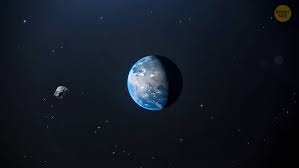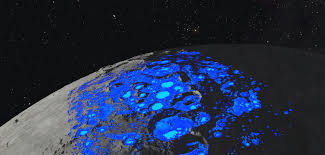
The Moon Isn’t What We Thought: Latest Findings Explained
For decades, the Moon was seen as a cold, gray, lifeless rock — a relic of the solar system’s early days, orbiting Earth without much mystery left to uncover. But recent missions and discoveries have turned that view upside down. The Moon isn’t what we thought it was — not even close.
New findings are challenging everything from its origin story to its potential for supporting human life. Let’s break down what scientists are now learning about our nearest celestial neighbor — and why it’s far more fascinating (and useful) than we ever imagined.
🌑 A Quick Recap: What We Thought We Knew
-
Formed from a massive Earth impact around 4.5 billion years ago
-
Bone-dry surface with no atmosphere or magnetic field
-
Geologically dead, with little activity for billions of years
-
A good landing site for Apollo missions, but not much more
That’s the Moon most of us learned about in school. But current space research is rewriting the lunar narrative.
🧬 Discovery #1: The Moon Might Be Partly Earth
New isotopic analysis from lunar rocks collected by NASA and China’s Chang’e missions show that the Moon’s composition is strikingly similar to Earth’s mantle. This supports the theory that a Mars-sized object smashed into Earth and ejected molten debris that formed the Moon — but it also suggests the Moon may be more “Earth” than alien.
Some researchers now believe the Moon could contain preserved pieces of Earth’s early crust, offering a unique look at our own planet’s ancient history.
💧 Discovery #2: Water… Is Everywhere
Forget the idea of a bone-dry Moon. Multiple missions — including NASA’s SOFIA telescope and India’s Chandrayaan-1 — have detected water molecules across the lunar surface, not just in shadowy craters near the poles.
Why this matters:
-
Water can support future lunar colonies
-
It can be split into hydrogen and oxygen for rocket fuel
-
It changes how we assess the Moon’s geology and evolution
There may be hundreds of millions of tons of water ice hidden in lunar soil. That’s a potential game-changer for long-term space exploration.
🌋 Discovery #3: The Moon Is (Slightly) Alive
While it’s not geologically “active” in the way Earth is, the Moon still quakes, contracts, and shifts. NASA’s seismometers have picked up moonquakes, and recent high-resolution images show faults and ridges that formed as the Moon slowly shrinks.
Some of these moonquakes are strong enough to damage future lunar structures — something engineers now must plan for.
🧲 Discovery #4: A Hidden Magnetic Past
Surprisingly, the Moon once had a strong magnetic field — possibly even stronger than Earth’s. This field could have lasted for hundreds of millions of years, offering early protection to the Moon’s surface from solar radiation.
Understanding this ancient magnetism could give scientists clues about the formation of magnetic fields in other rocky planets — including Earth and Mars.
🛸 Discovery #5: Strange Anomalies
Several regions of the Moon defy explanation. For instance:
-
The South Pole–Aitken Basin holds a mysterious mass of dense material beneath the surface — possibly metal from an ancient asteroid.
-
Certain areas emit strange electromagnetic signatures that don’t match known materials.
-
Some rocks appear to have been partially melted, but not by any known volcanic activity.
These oddities suggest that the Moon may have hidden geological processes — or a past we’ve barely begun to understand.
🌕 Why These Discoveries Matter
The Moon isn’t just a stepping stone to Mars — it’s a treasure trove of untapped science. These new findings reshape how we:
-
Understand planetary formation
-
Plan for sustainable lunar missions
-
Search for life-supporting resources
-
Protect astronauts from unknown hazards
And perhaps most exciting of all, the Moon is becoming a launchpad for a new space era — with permanent bases, telescopes on the far side, and international research stations on the horizon.
Final Thought
We once looked at the Moon and thought we had it figured out. But today, it’s proving to be one of the most complex, dynamic, and valuable objects in our solar system. With every new mission, we learn something that challenges old assumptions and opens new doors.
So the next time you look up at the Moon, know this: it’s not just a rock in the sky. It’s a living archive, a future outpost, and a cosmic puzzle we’re only just beginning to solve.
